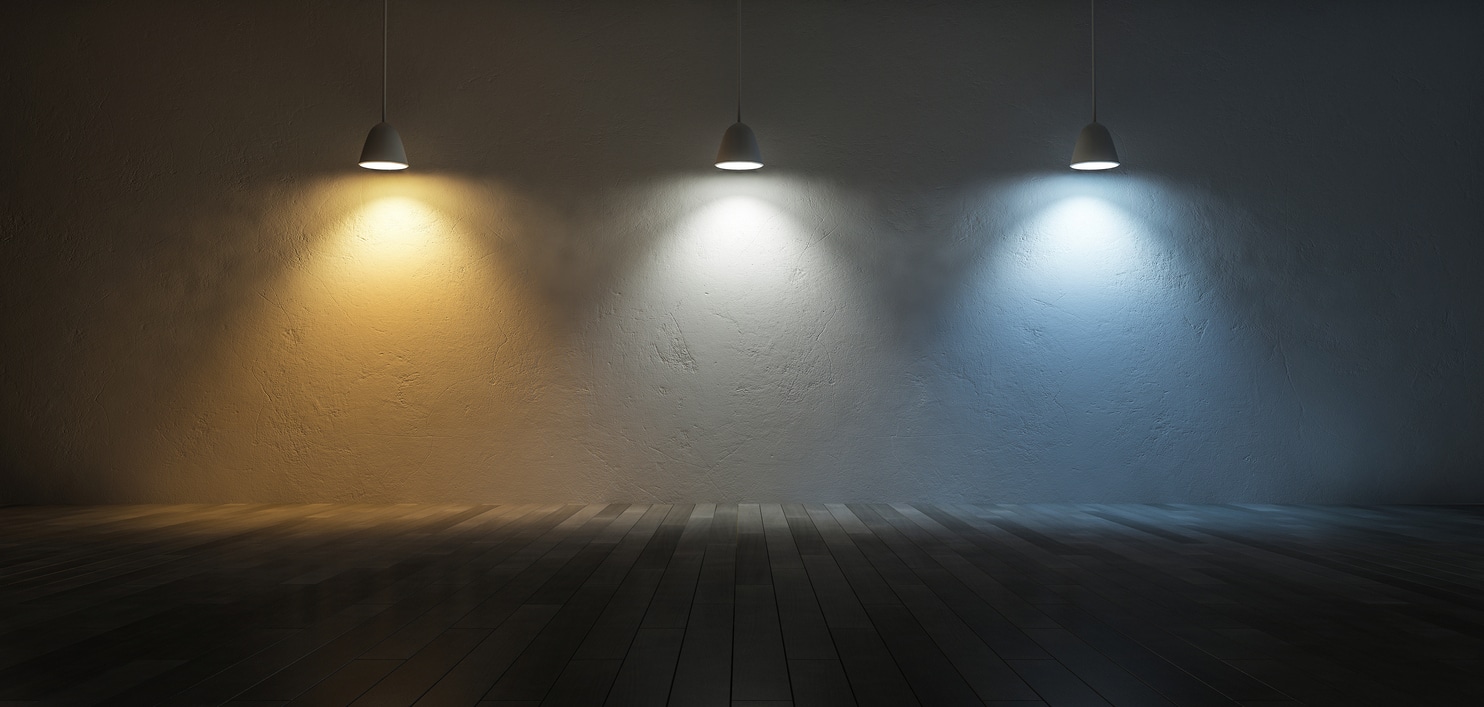If you’ve ever chosen a paint colour at a shop only to find that it looks dramatically different once applied to your walls at home, you’re not alone. The phenomenon of paint colours appearing to change under different lighting conditions can be perplexing. Understanding how light interacts with colour can help you choose the right shade for your space and avoid disappointing results. In this post, we explore why paint colours change in appearance and how to make the best choice for your home.

The Science Behind Light and Colour
To understand why paint colours look different under various lighting conditions, it’s essential to grasp the basics of light and colour perception. Light has different temperatures, measured in Kelvin, that range from warm (yellow/red hues) to cool (blue hues). This temperature affects how colours are perceived by the eye.
Metamerism is another crucial concept; it refers to the way colours change when viewed under different light sources. This explains why a paint colour that seemed perfect under the shop’s bright, artificial lights might appear dull or completely different in your home’s natural light.
Natural Light and Its Changing Nature
Natural light can vary greatly depending on the time of day and the orientation of the room. For instance:
- Morning Light: Rooms with morning light often have cooler tones, making paint colours appear crisper. Whites, blues, and greens can look vibrant and fresh.
- Midday Light: This light is the most neutral and consistent, making colours appear closest to their true shade.
- Evening Light: The warmer tones of the late afternoon can give colours a softer, more golden hue, enhancing yellows and warm neutrals but muting cooler shades.
Room Orientation also matters:
- North-Facing Rooms: These receive cooler, indirect light, which can make colours appear more muted or blue-tinted. Warmer colours work well here to balance the cool light.
- South-Facing Rooms: These get plenty of natural light throughout the day, making most colours look bright and true.
- East-Facing Rooms: These rooms benefit from morning light but lose it by afternoon, making colours shift from warm to cooler as the day progresses.
- West-Facing Rooms: These have the opposite effect, with colours appearing cooler in the morning and warmer in the afternoon and evening.
Artificial Lighting and Its Effects
Artificial lighting also significantly affects paint colours. Different types of light bulbs emit varying tones:
- Incandescent Bulbs: These emit a warm, yellow light that enhances warm colours like reds, oranges, and yellows but can make blues and greens appear dull.
- Fluorescent Bulbs: Typically cool and blue-toned, fluorescent lights can make warm colours look stark and cooler tones appear brighter.
- LED Bulbs: Available in a range of temperatures, from warm to cool. Choosing an LED with the right temperature for your space is key to ensuring your paint looks as intended.
Testing Paint in Different Lights
To avoid unexpected results, it’s vital to test paint samples under different lighting conditions:
- Observe paint samples at different times of the day to see how they change with natural light.
- Test under artificial light at night to ensure you’re satisfied with how the colour appears after sunset.
- Paint large sample patches on your walls or use portable poster boards. This allows you to move the samples around to see how they look in different areas of the room.
Common Mistakes to Avoid
Many homeowners make the mistake of choosing paint based solely on shop lighting or small swatches. This can lead to disappointment when the colour looks different in the home environment. It’s also important to consider how adjacent elements such as flooring, furniture, and décor affect the overall perception of the colour.
Tips for Choosing the Right Colour
Choosing the right paint colour involves more than just liking a particular shade. Here are some tips:
- Opt for adaptable neutrals if your room has changing light conditions throughout the day.
- Consult with a professional decorator, such as Alan Cox Decorators, who can provide guidance on colours that work best in different lighting.
- Utilise colour simulation tools and apps that can show how a paint colour will appear under various lighting conditions.
Recommended Tools and Resources
Several tools can help you make an informed choice:
- Paint sample pots: Invest in sample pots to test colours on your walls.
- Lighting simulation apps: Some apps allow you to see how colours look under different light settings.
- In-store lighting services: Many paint shops have light boxes that simulate different types of lighting so you can preview your chosen paint colour.
Conclusion
Choosing the right paint colour requires a careful look at how light interacts with it. By considering the types of light your space receives and testing paint samples under various conditions, you can make a confident decision. For expert advice and impeccable results, consult Alan Cox Decorators, who can guide you through the process of selecting the perfect paint colour to make your space shine.
At Alan Cox Decorators, we are proud to serve clients across Leicestershire, as well as Derbyshire and Nottinghamshire, ensuring that your decorating needs are met with the utmost professionalism and quality workmanship.




